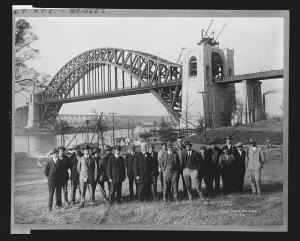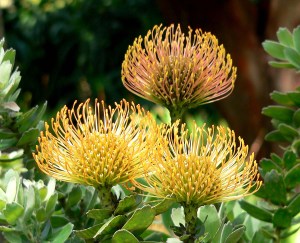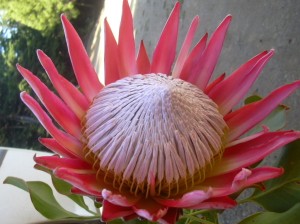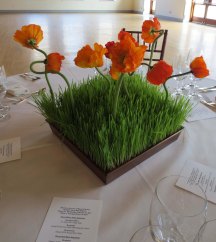My name is James Carroll and I’m a new gardener here at Randall’s Island. I’ve been learning about horticulture at the New York Botanical Gardens and the Queens Botanical Gardens and I’m very excited to be applying my gardening skills on this interesting island.
New York City is known for it’s famous bridges, the Brooklyn Bridge perhaps being the most iconic. But few are familiar with the architectural importance of the bridges over Randall’s Island. The Hell Gate Bridge and the Triborough Bridge are both unique representations of architectural styles and periods in New York History.
The violent waterway known as Hell Gate today was originally named Hellegat by the Dutch, which could mean “hell’s hole”. Like Spuyten Duyvil in the Bronx, where the creek nearby was named “Devil’s Spout” or Spuitende Duivel, the Dutch commonly named waterways in the low country in this manner.Today the converging currents of the East River are still rapid, despite being cleared of obstacles in the 19th century due to hundreds of shipwrecks.
The Bridge that spans Hell Gate was originally named, less excitingly, the New York Connecting Railroad Bridge. Initiated in 1912 and completed in 1916, the bridge linked the New York and Pennsylvania Railroad with the New England and New Haven railroad lines. Architect Gustav Lindenthal’s original design of the bridge’s approach ramps included a low steel lattice structure but was soon changed after concerns that the island’s asylum inmates would climb it to escape.
When completed it was the world’s longest steel arch bridge until the opening of the Bayonne Bridge in 1931. The Hell Gate Bridge was the source of inspiration for the Sydney Harbour Bridge which is 60% larger.
Today it serves both rail and passenger traffic and trains can be seen frequently passing over our gardens and urban farm. A recently completed bike path is located under the arches of the bridge allowing bicyclist to enjoy the grandeur of the bridge up close. Long term plans are currently under way to connect the Randall’s Island path to the South Bronx bikeway in Starlight Park.
While the Hell Gate Bridge could be argued to be the original tri borough bridge, it wasn’t until 1936 when Robert moses completed the present Triboro Bridge which provides vehicular and pedestrian traffic. The main bridge that connects Ward’s Island and Astoria is a fine example of art deco themes common in the 1930’s. The stepped columns recede in a ziggurat style similar to other projects from the 1930’s such as Rockefeller Center.
One such example of Art Deco architecture can be seen on Randall’s Island at the Triboro Bridge Authority Building which was Robert Moses’ headquarters during his reign over New York City as traffic czar and “master builder.”
The original cost of the Triboro Bridge was $60 million, greater than the Hoover Damn and one of the largest public works during the Great Depression.
The bridge was renamed the Robert F. Kennedy Bridge in 2008 but is still commonly referred to as the Triboro.
This photo, taken in 1936 upon the completion of the Triboro Bridge, shows an unidentified building under the Hell Gate Bridge where our Urban Farm is currently located. Many of the trees surrounding it have been cut down for sports fields, but many have been replanted with help from the MillionTreesNYC program.
Panorama of the Ward’s Island seen from Astoria Park, 2009
More photos and information on the Triboro Bridge at Forgotten NY here








